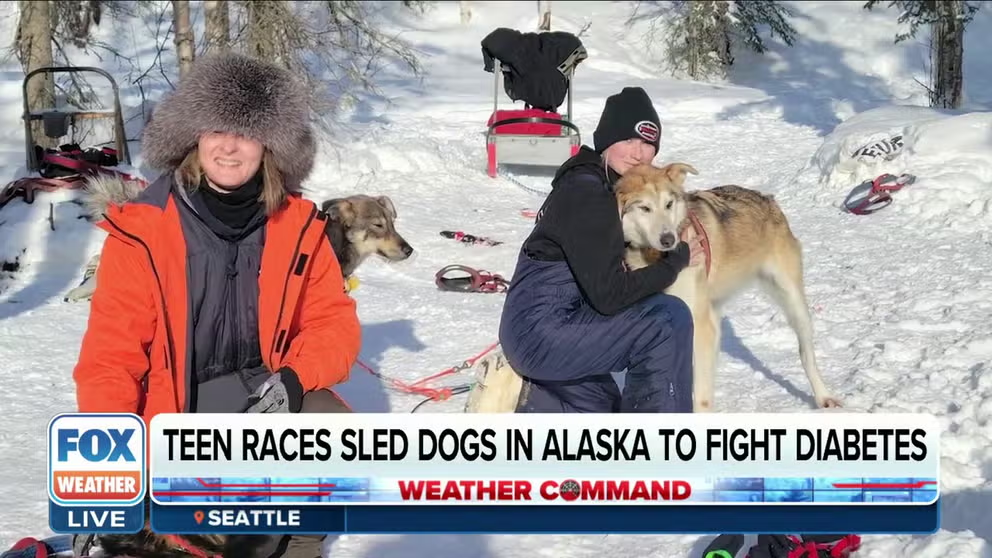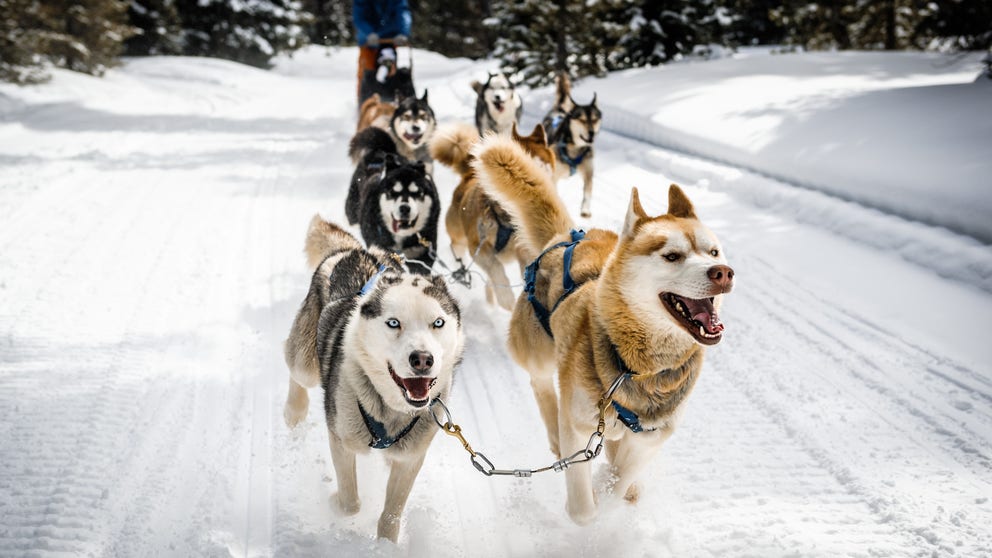Florida teen takes on 150-mile Alaska sled dog race but had never seen snow before
The 16-year-old who normally drives around the racetrack for NASCAR is taking on the cold and snow in the Junior Iditarod to honor the baby brother she lost to diabetes. "Even if we don't win the race, we win by sharing the symptoms and hopefully preventing another tragedy," her dad said.
Florida teen races sled dogs in Alaska to help fight diabetes
FOX Weather's Nick Kosir did a one-on-one interview with Lacy Kuehl, the youngest Floridian to ever participate in the Junior Iditarod Sled Dog Race. She did it all in honor of her brother who died of diabetes. She breaks down going from race car driving in hot Florida to learning how to deal with cold weather in Alaska to race dogs.
SARASOTA, Fla. - A Florida teenager has been turning heads on the racetrack but is about to tackle one of the most grueling races on the planet 5,000 miles away from home.
Lacy Kuehl, 16, is about to become the youngest Floridian to ever participate in the Junior Iditarod Sled Dog Race, a grueling 2-day 150-mile trek through the Arctic.
"I'll do anything for a challenge," Lacy told FOX 13.
HOW OUR BOND WITH DOGS INSPIRED THE IDITAROD

Lacy and her dad/pit crew in the winner's circle.
(Brent Kuehl / FOX 13 News)
Not only has the 16-year-old never seen snow, but she's also never even been colder than 30 degrees.
"It's a little crazy, but nothing wrong with being a little crazy, right?" she said with a sly grin.
But, while first place is her goal, Lacy is also racing with a purpose. She wants the world to know the story of her baby brother, Rocco, whose life was taken far too soon.
"I think about him often," Lacy said. "So yeah, it's super hard."
Lacy's inspiration
Rocco was Lacy's baby brother who fell ill shortly after his first birthday 13 years ago last month. He was sleeping a lot and very thirsty but never had a fever, which confused their parents and his doctors.
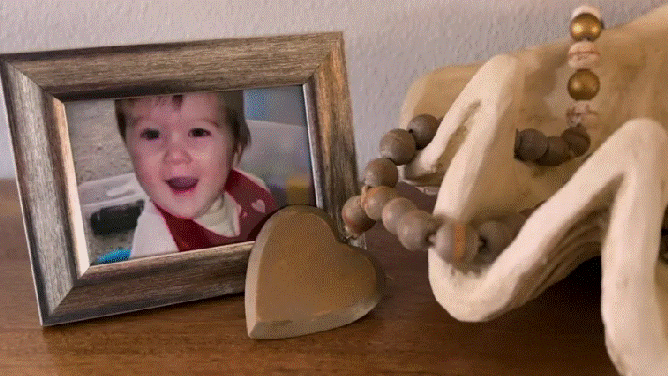
A photo of Rocco Keuhl before his untimely death.
(Brent Kuehl / FOX 13 News)
MOOSE ATTACKS IDITAROD SLED DOG TEAM FOR NEARLY AN HOUR
Lacy's parents, Heather and Brent Kuehl took Rocco to a walk-in clinic one morning, knowing something was wrong.
"I asked the doctor why he was sleeping so much. He said, 'when you're sick, you just want to sleep,'" Heather Kuehl said.
The doctor sent them home, but later that night, she said Rocco tried to get up and fell over. That's when they rushed him to the emergency room, where doctors shocked Heather and her husband Brent with the diagnosis. Rocco had juvenile diabetes or what's more commonly now called Type 1 diabetes. Their hearts broke hours later when Rocco died.
"We had no family history, and no one suggested it could be an option until it was too late," said Heather. "Losing a child is the worst thing. It will break you, and it broke me. It's been 13 years, and there are days when I don't want to get out of bed, but I do because of my daughter."
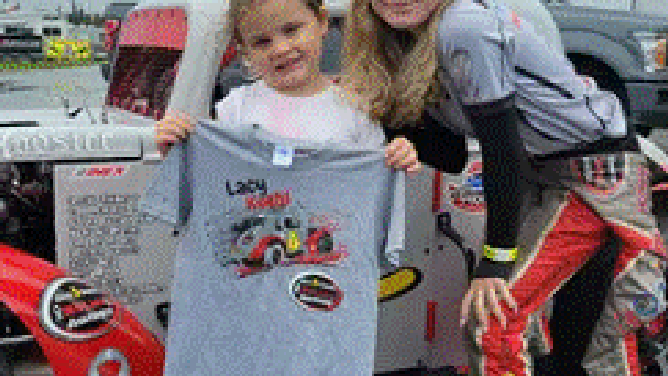
Lacy poses with and inspires a little girl on the track.
(Brent Kuehl / FOX 13 News)
Lacy now races not only with Rocco in her heart, but she races for him. About a year after Rocco died, a friend of Brent's invited him to Daytona to meet a NASCAR driver who was racing with diabetes.
Brent fell in love with racing and took Lacy to the Freedom Factory in Manatee County.
"I was hooked on racing from that moment on," Brent said.
Racing for Rocco
Lacy fell in love with it as well, always going to the track with him. At just six, Lacy was soon behind the wheel of a Go Kart, and her father knew instantly she had natural skills and a fierce drive.
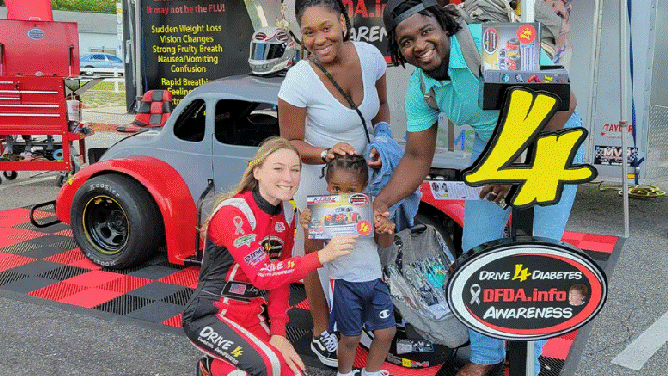
Lacy and fans.
(Brent Kuehl / FOX 13 News)
They also loved how the small-knit racing community always visited with one another and teams showed each other support. So it didn't take long for him to realize what an opportunity they'd have at the racetrack to share their story and teach others the warning signs of diabetes.
"It could cost you your child's life," Heather said. "I don't want it to happen to anybody else. It shouldn't happen to anyone else."
The Kuehl's established a non-profit organization called Drive 4 Diabetes Awareness to be the primary sponsor of Lacy's Go Kart and her Legends car.
So rather than sponsors on her suit, helmet and hauler, there are symptoms of diabetes. Rather than stats on Lacey's autograph cards, there's a story about Lacy's little brother. Fans and even fellow racers often flood Lacy's pits at every track.
"We always win when we go to race," Brent said. "Even if we don't win the race, we win by sharing the symptoms and hopefully preventing another tragedy."
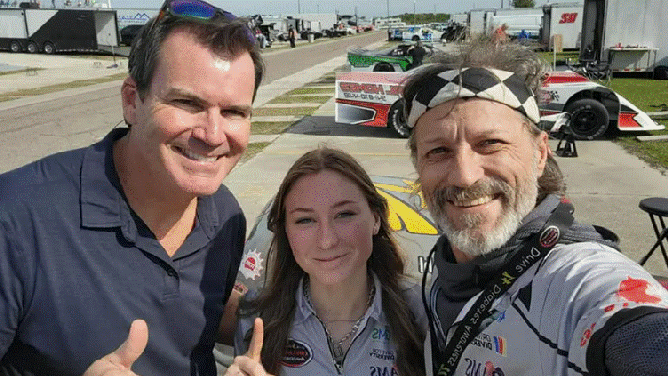
Lacy, her dad and FOX 13's Mark Wilson posing on the track.
(Brent Kuehl / FOX 13 News)
But winning on the track is something Lacy has found a way to do as well winning the Inverness Grand Prix and at Auburndale Speedway in her Legends car. She was so impressive early on, she caught the attention of NASCAR in 2020. At 12, she became the youngest driver ever signed in to their Drive For Diversity Driver Development Program.
"I'm a racer," Lacy said when asked what happens when she climbs into her race car. "Nothing else matters other than me trying to be the fastest I can, as focused as I can and drive the car to the best of the abilities to what I have."
Her mom admits she wasn't so keen at first to the idea of a life of racing, considering the dangers, but once she saw how Lacy skillfully prepared and avoided accidents, she knew she had the ability.
"Even at 12 years old, she amazed us," Heather said.
FROM IN-CAR TEMPERATURES AS HIGH AS THE 130s TO RAIN, HOW WEATHER IMPACTS NASCAR RACES
And to be able to use her platform at the track to promote diabetes awareness means everything to them, as not a day goes by that they don't think about Rocco.
"They were always together constantly," Heather said. "So, I think he drives her."c
Girl who has never seen snow heads for Alaska
Their story has touched many people, especially a fellow driver at a racetrack in Alaska where Lacy was supposed to race last August.
"We were so bummed because the race got rained out," Lacy said.
But that's when driver Nicholas Petit invited the Kuehl's to see his sled dog team. They gave it a try, and that night, he offered them to Lacy if she wanted to enter this year's Junior Iditarod sled dog race.
FIRSTHAND LOOK AT ALASKA'S IDITAROD-WINNING SLED DOGS
5 amazing facts about the Iditarod sled dogs
Running 100 miles or more a day, the canines that compete in the Iditarod Trail Sled Dog Race are in a league of their own.
CREATIVITY IS KEY WHEN TRAINING ALASKAN SLED DOGS IN SUMMER MONTHS
'It's a little crazy, but nothing wrong with being a little crazy, right?'
"After three days of being there working with the dogs, I was like, 'yes, I'm going to do it,'" Lacy said.
Now, the Florida teen, who has never seen snow, is now in Alaska preparing for one of the toughest races on the planet, which takes place February 25 and 26. It's a grueling 150-mile, two-day trek through the Arctic.
Another chance for her to race and another audience with which to share their story.
"I'm going out there to win, but the chance to spread awareness about Rocco's story and save some more lives is really why I couldn't resist," Lacy said.
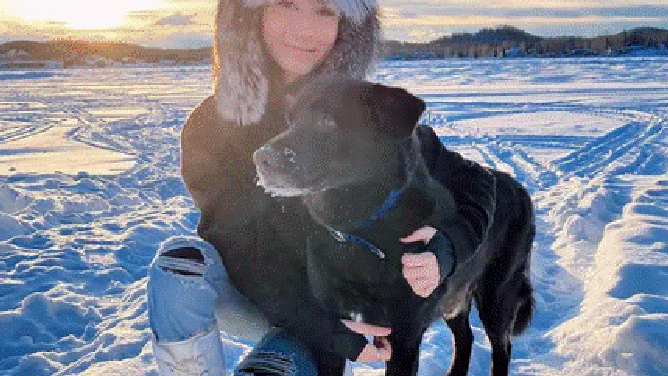
Lacy and one of her sled dogs.
(Brent Kuehl / FOX 13 News)
Her mom and dad couldn't be prouder knowing something positive could still come from their family tragedy.
"We know numerous families who've been sent home numerous times with [unknowingly diabetic] children, and then they finally figure it out, and then they're in critical condition," Heather said. "That's why we do what we do – to save lives."
You can follow Lacy's progress in the Alaskan Junior Iditarod Race by visiting the "Drive for Diabetes Awareness, INC" Facebook page and by visiting www.drivefordiabetesawareness.org.
NOTE: Juvenile diabetes is commonly referred to Type-1 diabetes and affects 1.45 million Americans with 64,000 people diagnosed each year, according to the CDC. Between 2001 and 2009, there was a 21 percent increase in the prevalence of T1D in people under age 20. For more diabetes resources and symptoms in toddlers click here.
